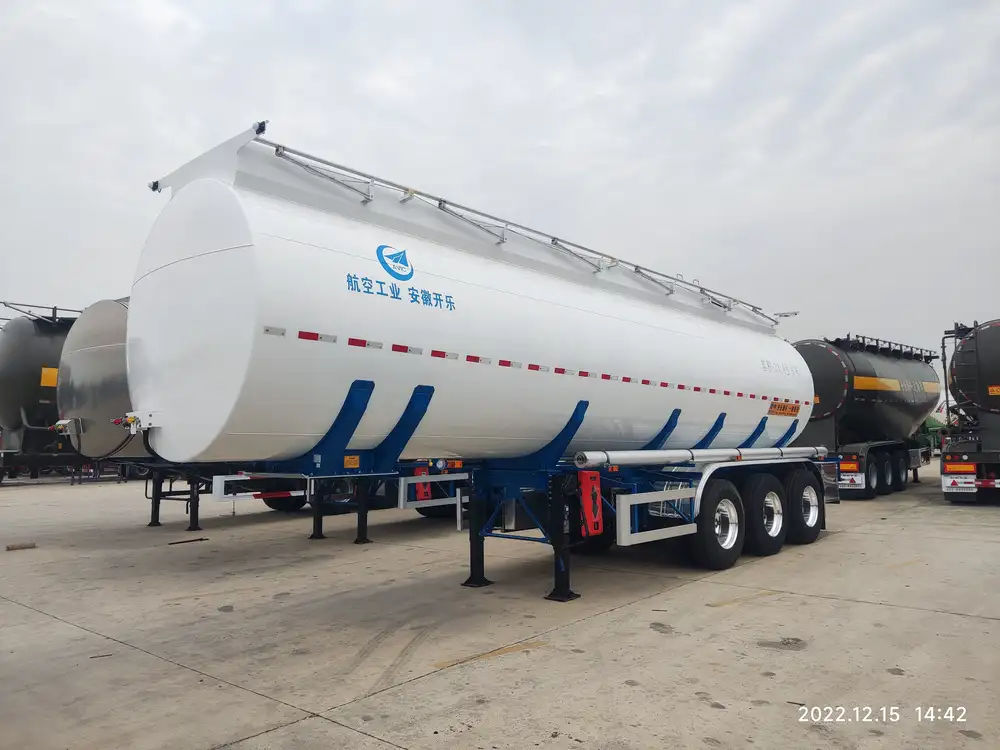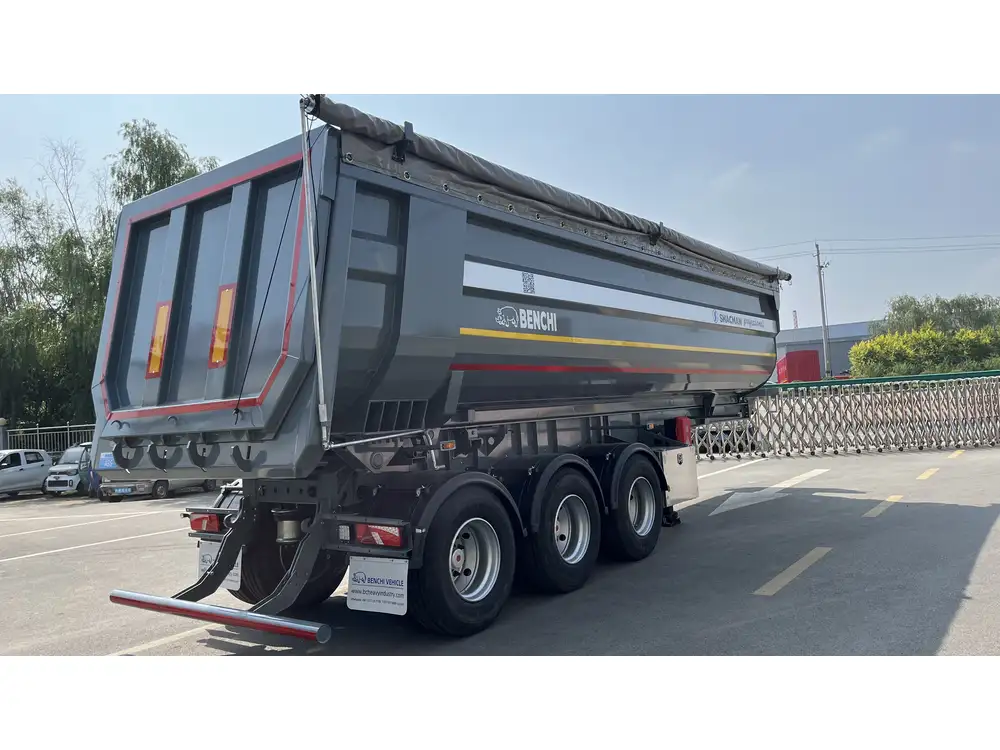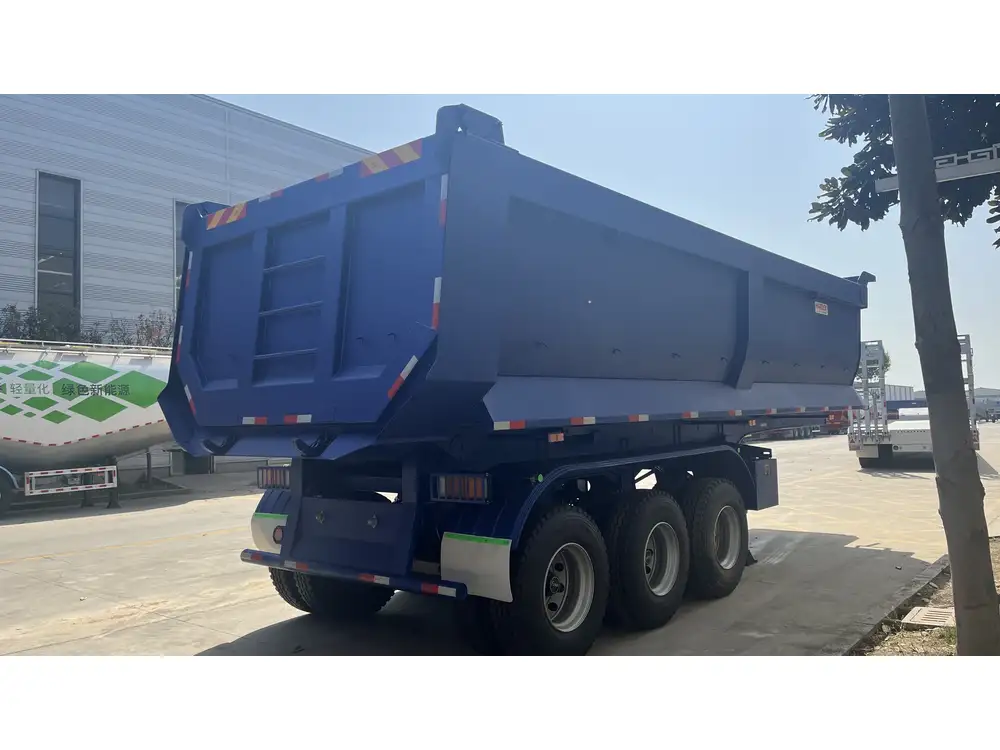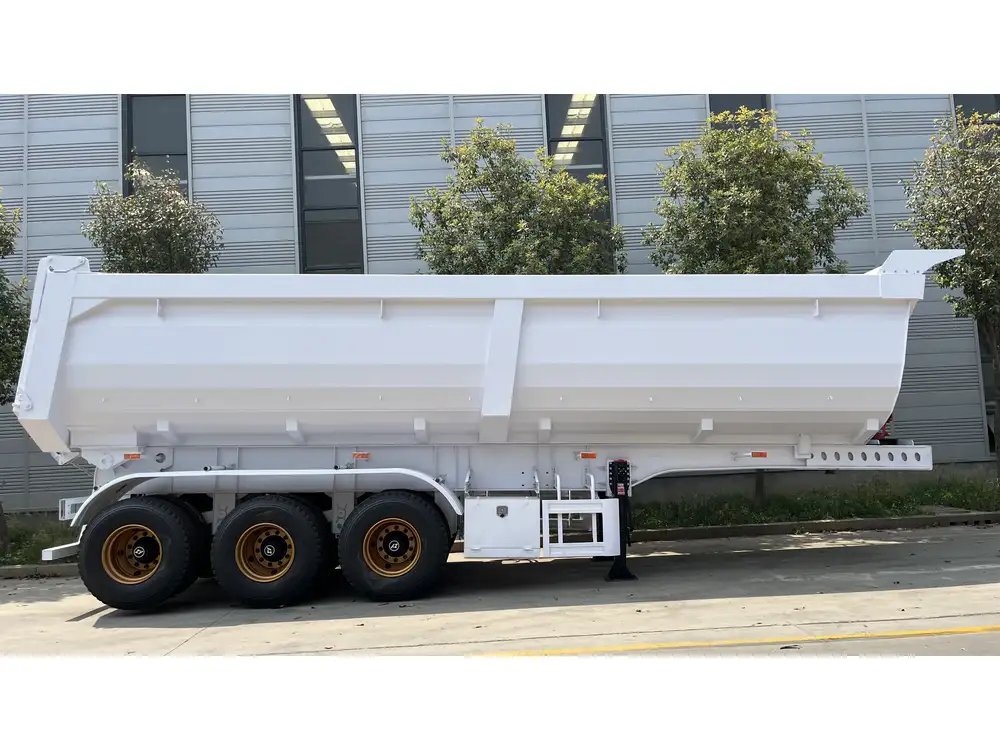When navigating the world of logistics and transportation, one of the most crucial considerations is the dimensions of semi-truck trailers. Specifically, understanding “what is the length of a semi-truck trailer” can significantly impact shipping efficiency, compliance with regulations, and the ability to maneuver in various environments. This thorough examination will explore the various lengths, types of trailers, and their implications for transportation businesses.
Semi Truck Trailer Lengths: An Overview
The length of a semi truck trailer is not a one-size-fits-all measure. Trailers come in various lengths, typically ranging from 26 feet to 53 feet, with specific considerations based on the type of freight being transported. Below, we dissect the common categories and their standard lengths.
| Type of Trailer | Typical Length | Description |
|---|---|---|
| Standard Dry Van | 48 to 53 feet | Most common for general freight; enclosed to protect cargo. |
| Flatbed Trailer | 48 to 53 feet | Open design for oversized loads; loading from any angle. |
| Refrigerated Trailer (Reefer) | 48 to 53 feet | Temperature-controlled; essential for perishable goods. |
| Step Deck Trailer | 48 to 53 feet | Lower deck heights for taller loads; allows for increased clearance. |
| Lowboy Trailer | 24 to 40 feet | Designed for transporting heavy equipment; low profile for stability. |
| Tanker Trailer | 30 to 40 feet | Used for liquid transportation; design varies based on liquid type. |
The Standard Length: 53 Feet
One of the most widely recognized lengths for semi truck trailers is 53 feet, primarily due to the regulations and practices in North America. The 53-foot standard has been adopted widely due to its ideal balance between cargo capacity and versatility, allowing carriers to maximize load efficiency while complying with highway regulations.

Legal Regulations on Trailer Length
Understanding legal guidelines is essential for anyone managing truck trailer logistics. Each state in the U.S. has its own regulations regarding the maximum allowable trailer length, which typically must abide by federal standards. Generally, the Federal Highway Administration permits lengths up to 53 feet for most trailers operating on interstate highways.
| State | Max Trailer Length | Notes |
|---|---|---|
| California | 53 feet | Strict enforcement of weight limits. |
| Texas | 59.5 feet | Includes special permits for oversize. |
| Florida | 53 feet | Local laws may vary based on routes. |
| New York | 53 feet | Enforced under New York Vehicle and Traffic Law. |
Considering these regulations is vital for trucking companies to avoid fines and ensure their routes can accommodate the trailer dimensions they use.
Implications of Trailer Length
Payload Capacity and Transportation Efficiency
The relationship between trailer length and payload capacity is important. A longer trailer usually provides more space for cargo, enabling transportation companies to consolidate loads. Increased payload capacities lead to fewer trips and reduced operational costs, an aspect critical in the competitive trucking industry.
Conversely, exceeding the length limits can drastically reduce profitability through fines and empty returns if routes become inaccessible. Hence, calculating the optimal length for varying loads and routes is vital for operational efficiency.

Maneuverability
While longer trailers may promise greater capacity, they can also introduce challenges when it comes to maneuverability. Urban environments with narrow streets or parking constraints can pose significant issues. A longer trailer may lead to difficulty in completing turns, accessing delivery points, or adhering to loading dock restrictions, which are often designed for standard truck dimensions.
Key considerations include:
- Turning Radius: Longer trailers typically require a larger turning radius, which can complicate logistics in urban settings.
- Clearance Limits: Height discrepancies when entering facilities must be weighed against the cargo profile.
- Weight Distribution: Longer trailers can complicate weight distribution, which is crucial for maintaining balance and road safety.
Types of Trailers and Their Length Requirements
The diversity of freight transport necessitates various types of trailers, each with specific utility and length proportions.
Dry Van Trailers
Dry van trailers are akin to large boxes on wheels, typically ranging from 48 to 53 feet in length. They are incredibly popular due to their ability to accommodate a wide range of cargo, from packaged goods to electronics.

Flatbed Trailers
Flatbed trailers, ideally suited for versatile loads, also conform to common lengths of 48 to 53 feet. Their design allows for loading from all sides, making them suitable for heavy equipment or oversized items. Considering flatbed logistics necessitates knowledge of load securement and weight distribution to operate safely.
Specialized Trailers
Refrigerated (Reefer) Trailers: Typically maintain lengths similar to dry vans, but with specific temperature control features. Length might fluctuate based on cooling units’ installation.
Lowboy Trailers: Generally range from 24 to 40 feet, crucial for heavy machinery transport due to their lower profile and enhanced stability during transit.
Considerations for Selecting Trailer Length
Choosing the appropriate trailer length involves evaluating not only your typical cargo and routes but also your business model and growth aspirations. Here are steps to guide this decision:
Evaluate Cargo Needs: Ensure the trailer length accommodates your largest loads while minimizing unused space.
Assess Route Limitations: Investigate state and local regulations that could dictate your options based on operational geography.
Analyze Cost Implications: Longer trailers can increase fuel consumption; consider potential alternatives.
Plan for Flexibility: Opt for combinations that can dispatch varying loads and reduce constraints on your operational capabilities.

Case Studies and Best Practices
Looking at successful case studies where companies improved their logistics through optimal trailer length adjustments can illuminate effective strategies:
Example 1: XYZ Logistics
Company Background: XYZ Logistics operated predominantly with 48-foot dry van trailers, facing consistent challenges with larger loads.
Resolution: By investing in a fleet of 53-foot trailers, they increased their average payload per trip by 15%, leading to a substantial decrease in shipping costs and number of required runs.
Lessons Learned: Adapting trailer dimensions in response to cargo changes can yield significant operational efficiencies.
Example 2: ABC Transport Services
Company Background: ABC Transport utilized flatbed trailers limited to 48 feet, resulting in inefficiencies in securing over-dimensional freight.
Resolution: Transitioning to longer flatbed options enabled them to accommodate larger equipment loads and improved their routing capacity, leading to enhanced customer satisfaction through increased on-time deliveries.
Lessons Learned: Understanding the load requirements and adapting trailer length accordingly can lead to increased winning bids and better contract fulfillment.

Conclusion
Grasping the nuances of semi truck trailer lengths is paramount for anyone in the transportation industry. The ability to make informed decisions about trailer dimensions not only affects operational efficiency but also ensures compliance with legal frameworks, masterful route planning, and financial viability.
Whether you find yourself managing a fleet of dry van trailers or flatbeds, the comprehensive understanding of “what is the length of a semi truck trailer” will guide you toward enhanced logistics solutions, ultimately leading to a more successful operation. Our endeavor would always prioritize your needs and streamline your processes, ensuring you navigate the complexities of trailer logistics with precision and expertise.
FAQs
1. What is the maximum length allowed for a semi truck trailer?
The standard maximum length in the U.S. for a semi truck trailer on interstate highways is predominantly 53 feet, though individual states may have specific allowances.

2. Are there benefits to longer trailers?
Yes, longer trailers can provide increased payload capacity, reducing operational costs by allowing more goods to be transported in a single trip.
3. How do I choose the right trailer length for my needs?
Evaluate your typical cargo size, the routes you travel, and any legal restrictions in your operating areas to determine the most effective trailer length.
4. What should I consider beyond trailer length?
Consider maneuverability, fuel consumption, loading/unloading efficiency, and compliance with both state and local transportation regulations to make an informed decision.
Understanding these key elements paves the way for a more streamlined transport experience. Expansion into a full-fledged awareness of the implications and regulations surrounding trailer lengths will yield tangible benefits—both in terms of profitability and operational excellence.



